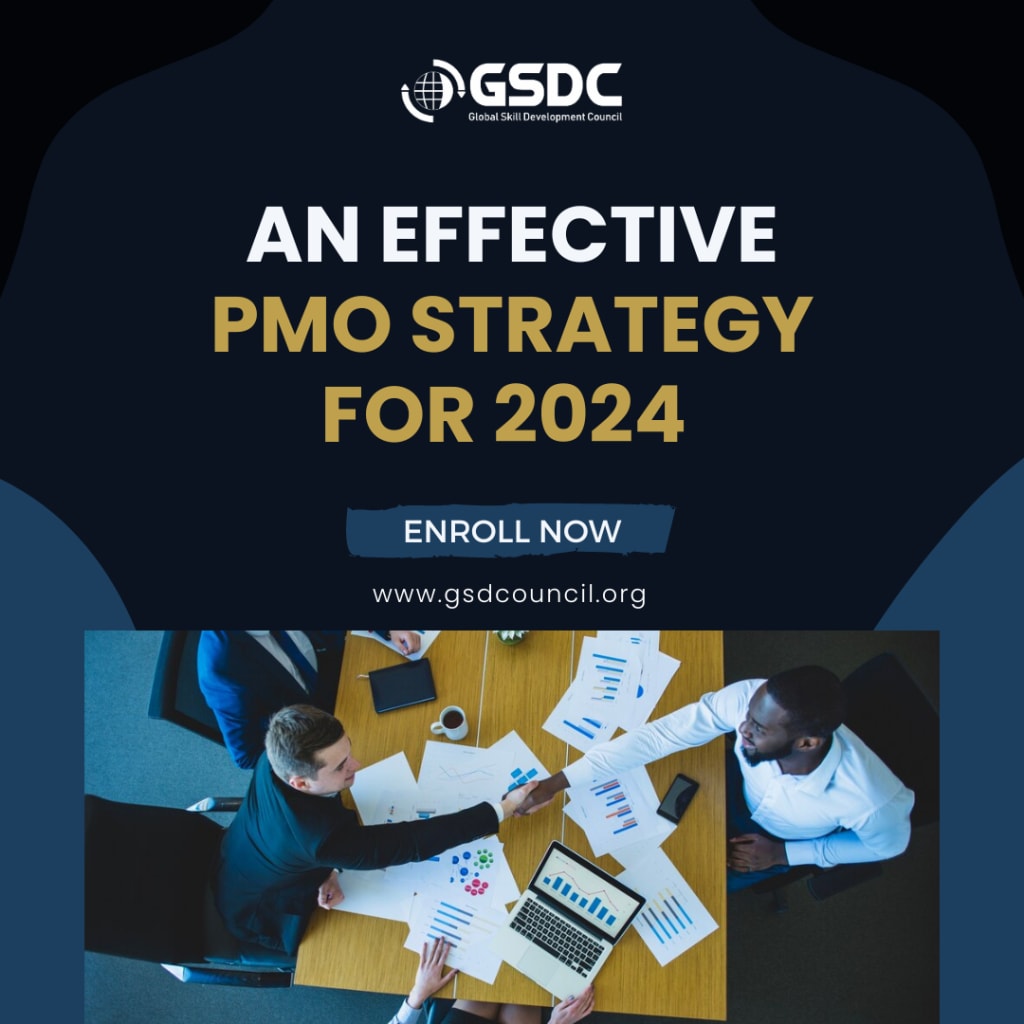An Effective PMO Strategy For 2024
PMO (Project Management Office) certification is a dynamic field that evolves with changes in project management practices, technology advancements, and industry demands.

PMO certification programs are evolving to keep pace with changes in the project management landscape, equipping PMO professionals with the knowledge, skills, and competencies needed to drive project success in a rapidly changing world.
Developing an effective PMO (Project Management Office) strategy for 2024 requires a thorough understanding of current industry trends, organizational objectives, and emerging challenges. Here's a detailed explanation of the components of an effective PMO strategy for the year 2024:
Alignment with Organizational Goals:
Start by aligning the PMO strategy with the broader organizational goals and objectives for 2024. Understand the strategic priorities, market dynamics, and competitive landscape that will shape the organization's direction in the coming year.
Strategic Planning and Road mapping:
Conduct strategic planning exercises to identify key initiatives and projects that will support the organization's goals. Develop a roadmap that outlines the sequencing, dependencies, and timelines for these projects, considering resource availability and constraints.
Flexible and Agile Approach:
Embrace flexibility and agility in project management practices to respond quickly to changes and uncertainties in the business environment. Incorporate Agile methodologies and adaptive project management techniques to enable rapid iteration, continuous improvement, and stakeholder collaboration.
Digital Transformation Initiatives:
Prioritize digital transformation initiatives that leverage technology to enhance business processes, improve efficiency, and drive innovation. Identify opportunities to integrate digital tools, automation, data analytics, and artificial intelligence into project management practices to achieve strategic objectives.
Risk Management and Resilience:
Strengthen risk management capabilities to identify, assess, and mitigate risks that may impact project outcomes. Develop contingency plans and resilience strategies to address potential disruptions, such as supply chain disruptions, cybersecurity threats, and geopolitical uncertainties.
Stakeholder Engagement and Communication:
Foster strong relationships with key stakeholders, including executives, project sponsors, team members, and external partners. Maintain open lines of communication, provide regular updates on project progress, and solicit feedback to ensure alignment and stakeholder buy-in.
Talent Development and Capacity Building:
Invest in talent development initiatives to build a skilled and capable project management workforce. Offer training programs, coaching, and mentoring opportunities to enhance project management competencies, leadership skills, and emotional intelligence among PMO professionals.
Performance Measurement and Continuous Improvement:
Establish performance metrics and KPIs (Key Performance Indicators) to monitor project performance, track progress against goals, and identify areas for improvement. Implement a culture of continuous improvement, where lessons learned from past projects are used to inform future decision-making and enhance project outcomes.
Sustainability and Social Responsibility:
Integrate sustainability and social responsibility considerations into project management practices. Consider the environmental, social, and ethical implications of projects, and seek opportunities to minimize negative impacts and create positive social value through projects.
Adoption of Emerging Technologies:
Stay informed about emerging technologies and trends that may impact project management practices, such as blockchain, Internet of Things (IoT), and virtual reality. Explore opportunities to leverage these technologies to optimize project delivery and create value for stakeholders.
By incorporating these components into the PMO strategy for 2024, organizations can effectively navigate the complexities of the business environment, drive project success, and achieve their strategic objectives in the year ahead.
About the Creator
Enjoyed the story? Support the Creator.
Subscribe for free to receive all their stories in your feed. You could also pledge your support or give them a one-off tip, letting them know you appreciate their work.





Comments
There are no comments for this story
Be the first to respond and start the conversation.